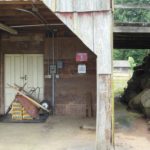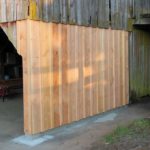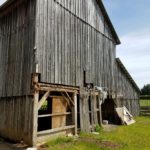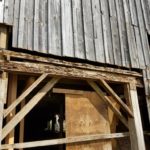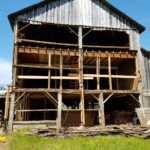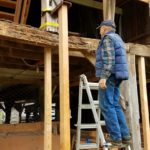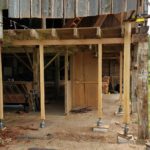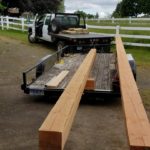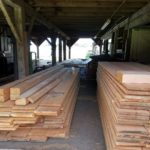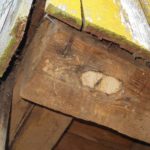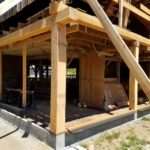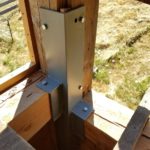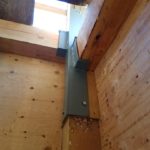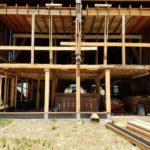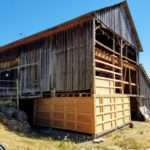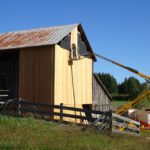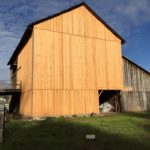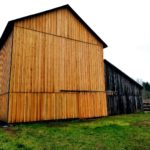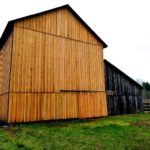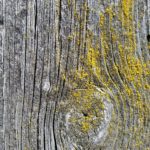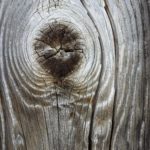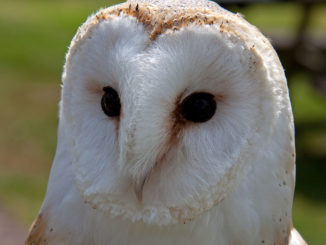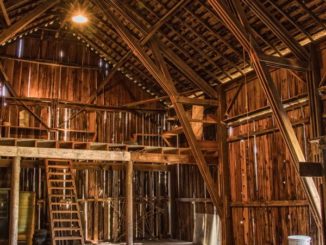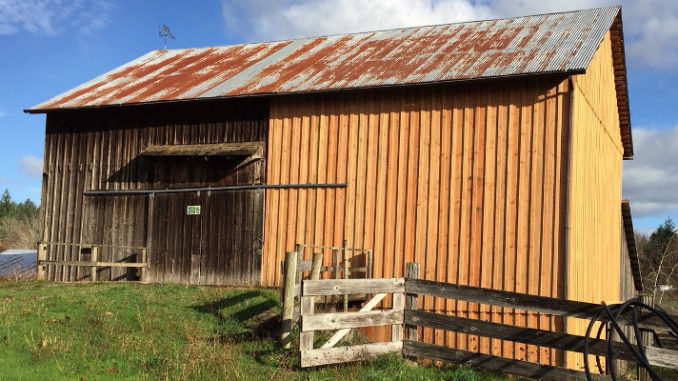
Owning an old barn – one that was built in the first decade of the 1900s – brings special challenges in the form of maintenance and repairs. When Clackamas Soil and Water Conservation District purchased the farm property in 2013, we expected to find some deterioration in the barn. The degree of deterioration surprised us when we dug into barn repairs in 2017.
Work in 2014
In 2014, we replaced a corner post that had gone soft. The weight of the barn was deforming that post, making this the first significant repair we made to the barn. Later in 2014, we re-fastened several roof panels that were coming loose.
Evaluation of the barn in 2015 and 2016
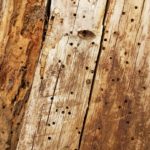
In 2015 and 2016, we assessed the barn to see what might be next on the list of vital repairs. Examination of the major structural timbers revealed damage from powder post beetles throughout the barn, and several of the vertical and horizontal timbers on the south wall showed evidence of rot.
Winter storms generally come out of the southwest, so the southwest corner of the barn has taken the brunt of wind and water all these years.
South wall work began in 2016, continued through 2017
In 2016 we made the decision to repair the south wall.
Bracing structural members, removing the skin
In 2016 and early 2017, we braced the structural members using posts, brackets, and cables. Then we began to uncover the south wall of the barn to determine the extent of damage to structural members. Even though we expected some deterioration, we were surprised by the extent of rot that we found.
When we uncovered the rest of the south wall, we found that rot in the main beam extended to the centerline of the barn. Significant deflection of that important beam had occurred. The situation was complicated by the barn loft which appears to have been constructed after deflection had started.
Barn twisted
Along the way, we dropped plumb bobs from the roof trusses to the main floor. We discovered that the building was twisted and no longer vertical so we used cables and winches to slowly bring it back to plumb. This also helped resolve some sagging of the roof, resulting in a straighter roofline and eaves.
To give the repairs a strong foundation, we poured a reinforced concrete stem wall with post footings.
Rotted posts and beams replaced
Rotted posts were replaced. We found that the southwest corner post had a wooden pin (probably oak) that connected it to the beam resting on it, just as we found in the northwest post in 2014. This was probably an original timber that had lasted more than 100 years.
Rotted beams were replaced. A special bracket was custom manufactured to help tie together the beams and posts at the southwest corner. The posts and beams were custom milled for us by Kaster’s Kustom Cutting.
New additions to strengthen and protect structure
A new structural post was added under the centerline to take some of the weight transferred from the roof. The lack of that center post probably contributed to the deflection of main beam as the beam softened over more than 100 years.
Shear walls were not part of the original structure, but because of the twisting we observed, we added them on the ground level and along the main level to strengthen and stiffen the entire structure.
Then heavy felt paper was stapled to the outside before covering the exterior with rough-cut board-and-batten siding to match the style of the rest of the barn. The felt will help keep the structural members dry, reducing the likelihood of rot for many years.
The addition of a better foundation, additional posts, shear walls, and the felt as a protective layer mean that this part of the barn will be strong and secure for many decades to come.
New doors
Lastly, new doors were installed to help keep the weather outside.
Barney stuck with us
We were concerned that Barney the barn owl might not be able to tolerate the noise and exposure from the repair work, but he stuck around. Now that this phase of repairs is complete, he is back on his favorite roost inside the barn.
What comes next?
With these repairs and changes, we expect that the barn will be stable for many more years. However, in 2017 we found that the roof trusses are getting soft from powder post beetle damage and rot.
In 2018, we’ll keep an eye on the structure, and in particular, the roof. Replacing the roof will probably be the next significant repair to the barn, unless the remaining old posts deteriorate more quickly than we expect.
Meanwhile, the new siding will start to weather and will eventually gain the patina evident on older boards on the barn.
